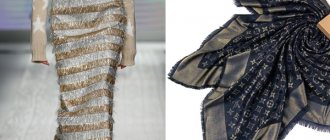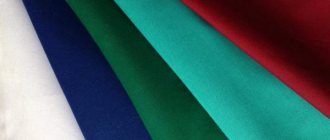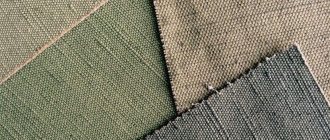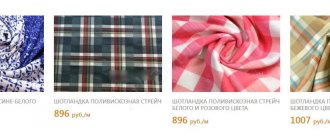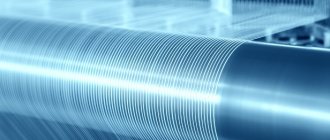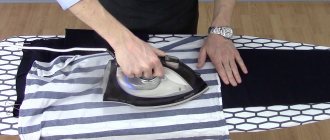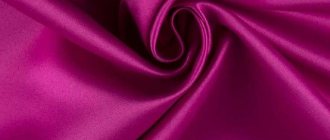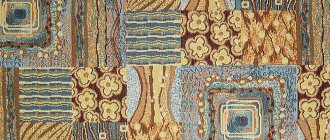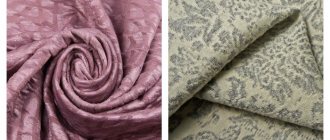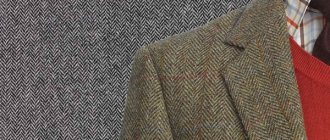Weave Features
Ribbed fabrics can be very different, but they are produced in only two ways: knitted and woven, but with different types of weaving. Knitted materials are not woven, but are knitted by alternating two main stitches and yarn over variations.
Woven fabrics are based on twill or plain weaves, each with many variations in the thickness and density of the warp and weft threads. In fact, a rib is a weft thread protruding above the warp, but placed differently.
According to a number of production features, the hem can be longitudinal or diagonal, at an angle of 45°. But, nevertheless, it is always denser than fabrics with a smooth surface.
Possible compositions
In modern weaving production, ribbed fabrics are made from natural, artificial and synthetic threads in any combination. All-natural compositions, especially wool and cotton, are considered classics, but time has shown that they are less comfortable than analogues with a synthetic share of up to 30%.
Synthetic additives:
- simplify care and storage;
- prevent the destruction of woolen fabrics by pests;
- reduce shrinkage of cotton and creasing of silk;
- reduce the price of the finished product.
Many ribbed fabrics, which began their journey as completely natural, gradually became blends, or even completely lost their natural component. For example, ribbed silk fabric - reps - has turned into pure synthetics. However, completely unnatural imitations cannot replace the original; after all, polyester will never become silk.
Kinds
All tissues on the surface of which a distinct longitudinal or inclined tubercle is formed - that is, a scar, can be divided both by its width and by the composition of the material. In most cases, the appearance, which includes the width of the hem, is a commercial finding of the manufacturer - as with corduroy.
The composition of ribbed fabrics is:
- cotton: corduroy, poplin, denim;
- silk: rep, fail;
- wool: gabardine, cord, carpet, Boston.
In recent decades, manufacturers have sought to reduce the natural component, replacing it with synthetic ones. When purchasing, it is recommended to clarify this point in the accompanying documents.
Names of ribbed fabrics, their properties and applications
There are a huge number of ribbed fabrics; they differ from each other in density, composition and width of the strip. In some cases, the scar is simply imitated. Their properties vary depending on the composition and type of weaving. There is only one thing in common: ribbed fabrics are more impressive and comfortable for daily use than their counterparts with smooth surfaces.
Knitwear
Ribbed knits are ribbed patterns that stretch easily but always return to shape. Most often, we mean various patent elastic bands or classic variations of pairwise placement of front and back loops (2 by 2, 3 by 3).
Ribbed knitwear is always at the peak of popularity. Almost everything necessary for a children's wardrobe is made from it, such as tracksuits, sweatshirts, sweaters and knee socks, and winter accessories.
Author:
Anastasia Kukushkina
I hope you enjoy the article I have prepared for you! If you find errors in it, write to me about it! I will answer any questions you have, ask them!
